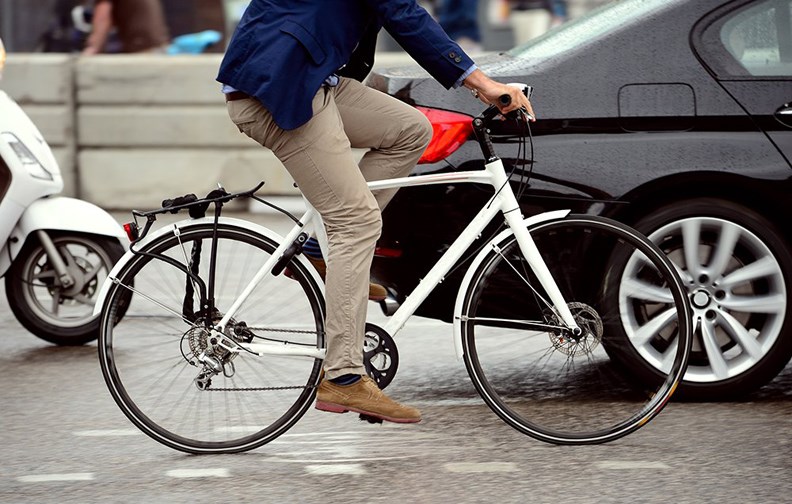As a Coast resident who uses his bike for daily transportation, I’m frequently asked, “Do you feel safe on our roads?” This question is often accompanied by a story of how he or she would cycle if the roads were safer, or if there were more bike lanes that were better maintained. Now, I’m a big fan of more bike lanes and better maintenance, but the reality is that cycling on the Coast does feel safe to me, and the statistics back me up.
When I moved to the Coast from Vancouver seven years ago, I experienced cycling culture shock. I left behind a city with a well designed, growing network of bike lanes and routes for … well, not much in the way of cycling facilities. I soon found that the Coast offers a cycling environment that, with the proper attitude, can be quite safe. Coast drivers are by and large friendly and respectful. In seven years of regular riding, I’ve had only one negative experience, and countless positive ones. I’ve also found that, unlike in the city, folks here really appreciate the personal touch. A friendly wave or a “go ahead” signal with my hand is invariably greeted with a warm smile.
All that said, being safe on your bike is a lot about attitude. I am a vigilant (my kids would say paranoid) cyclist. When I approach a stop sign, I check to see that the drivers at the intersection have in fact stopped and can see me. I anticipate people squeaking a left-turn across the highway, and ride accordingly. I always use lights at night, and I treat people who are driving with the same respect I hope they will offer me. In this small community, I feel like a two-wheeled ambassador, and I want to leave a positive impression.
This raises the question: “Maybe an experienced cyclist feels safe, but isn’t cycling a lot more dangerous than driving?” Not according to an excellent analysis of the comparative risks of cycling published in Momentum Magazine. The authors examined data for traffic fatalities in B.C. across five modes of transport. Not surprisingly, motorcycles are by far the most dangerous mode of travel, and buses are the safest by a wide margin. Cycling and driving, however, had small differences in risk, and cycling was in fact safer than walking.
The same article cites compelling evidence that the single most effective way to increase safety for cyclists is to build bike lanes and other infrastructure that separates bikes from cars. The Netherlands – the holy land of bike paths – is far safer to cycle in than Canada. So improving our bike paths is key to building an active transportation community and reducing traffic congestion. But don’t wait for the perfect bike lane before riding your bike. With the right attitude, the Coast is a fine place to cycle.
Bike to Work and School week registration is open! Register today at www.biketowork.ca/sunshine-coast. Follow us on Facebook to stay updated on events, prizes and fun resources to prepare for Bike to Work and School Week. @TraCSunshineCoastBC
– Submitted by Tim Howard, president of Transportation Choices (TraC) Sunshine Coast



